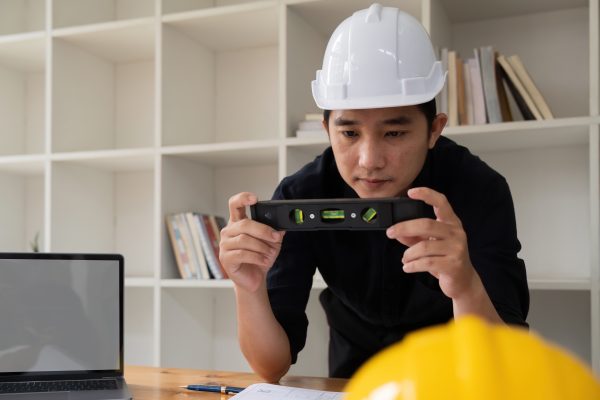 The construction industry today finds itself in a profound transformation fueled by technological advancements and evolving work dynamics. In fact, an important shift is underway with the increasing integration of remote work practices. These new practices open fresh opportunities for collaboration, innovation, and expansion. With projections from Upwork suggesting that approximately 36.2 million Americans will embrace remote work by 2025, evidently, this trend is reshaping various sectors, including construction. Moving forward, this blog will tackle how the incorporation of remote civil engineers is driving growth within the construction sector in 2024, fundamentally altering its landscape in unprecedented ways.
The construction industry today finds itself in a profound transformation fueled by technological advancements and evolving work dynamics. In fact, an important shift is underway with the increasing integration of remote work practices. These new practices open fresh opportunities for collaboration, innovation, and expansion. With projections from Upwork suggesting that approximately 36.2 million Americans will embrace remote work by 2025, evidently, this trend is reshaping various sectors, including construction. Moving forward, this blog will tackle how the incorporation of remote civil engineers is driving growth within the construction sector in 2024, fundamentally altering its landscape in unprecedented ways.
The Rise of Remote Civil Engineers in Construction
The traditional notion of construction work often shows images of bustling job sites. Traditionally, engineers and workers diligently carry out tasks onsite. However, the rise of remote work technologies has changed this set up. New possibilities for flexibility and efficiency are now being offered. Thus, remote civil engineers, equipped with the latest digital tools and communication platforms, are now able to contribute to construction projects from virtually anywhere in the world.
Leveraging Global Talent
One of the most significant advantages of incorporating remote civil engineers into construction projects is the access to a diverse pool of talent. In 2024, construction firms are no longer limited to hiring engineers solely based on geographical proximity to project sites. Instead, they can recruit professionals with specialized skills and expertise from around the globe. Certainly, this enables them to tackle complex challenges and drive innovation.
Enhanced Collaboration and Communication
Effective collaboration lies at the heart of successful construction projects. Remote civil engineers use a variety of communication tools and project management platforms to collaborate seamlessly with on-site teams, architects, clients, and other stakeholders. Moreover, video conferencing, cloud-based document sharing, and real-time messaging help in swift decision-making. They are needed so that everyone remains aligned with project goals.
Streamlined Project Management

BIM allows remote civil engineers to create comprehensive digital models of the project. With BIM, they can put in detailed information about every aspect of the structure, from architectural components to mechanical systems. This holistic approach enables engineers to visualize the project in its entirety. Furthermore, this facilitates better coordination and collaboration among various stakeholders, including architects, structural engineers, and contractors. By using BIM, remote civil engineers can identify potential clashes or conflicts in the design phase. Without a doubt, BIM enables timely problem-solving and helps avoid expensive revisions during construction.
Furthermore, remote civil engineers use project scheduling applications to improve workflows and ensure efficient project timelines. These applications help develop detailed project schedules, allocate resources effectively, and track progress in real time. By having a clear overview of project milestones and deadlines, remote civil engineers can identify potential problems or delays and take forward-thinking measures to reduce risks and keep the project on track. Additionally, project scheduling applications allow for better communication and coordination among project teams. They enhance overall project efficiency and reduce the likelihood of schedule overruns.
Overall, the efficiency gained through the utilization of advanced software tools translates directly into real benefits for construction firms. Project delays are minimized, rework reduced, and resource utilization optimized. As construction firms continue to embrace technological advancements, the role of remote civil engineers will become increasingly important in driving efficiency and success in construction projects.
Embracing Technological Innovation

Drones
One notable area where remote civil engineers are making significant steps is in the realm of surveying. Therefore, drones have become indispensable tools. With drones equipped with high-resolution cameras and LiDAR sensors, remote civil engineers can make aerial surveys with accuracy and efficiency. These surveys will certainly provide more detailed physical data. Therefore, stakeholders will have a clear understanding of the project site and its surroundings. Moreover, drone surveys enable engineers to identify potential challenges or hazards early in the project lifecycle. They facilitate effective problem-solving and risk-reduction strategies.
Advanced 3D Modeling Software
In addition to drone technology, remote civil engineers are leveraging advanced 3D modeling software to create detailed representations of construction projects. Through intricate digital modeling, engineers can visualize every aspect of the project. From structural elements to mechanical systems, they can visualize them with remarkable precision. This enables stakeholders to gain more understanding of the project’s design and functionality before construction begins. This sofware minimizes the likelihood of design flaws or discrepancies. Furthermore, 3D modeling facilitates effective communication among project teams, allowing for collaborative design iterations and informed decision-making processes.
VR Simulations
Moreover, remote civil engineers are exploring the possibilities offered by virtual reality (VR) simulations to enhance project visualization and stakeholder engagement. Besides, by bringing stakeholders into virtual environments, engineers can provide interactive experiences that enable clients, investors, and regulatory authorities to explore the project in a lifelike setting. VR simulations allow stakeholders to navigate through virtual constructions. Additionally, they can interact with elements of the design and gain a firsthand perspective of the project’s scale and functionality. This level of interaction fosters greater transparency and confidence among stakeholders, without a doubt. Hence, it leads to smoother project approvals and reduced instances of costly revisions or disputes.
Overcoming Challenges
While the adoption of remote civil engineers offers numerous benefits, it also presents challenges that must be addressed. Connectivity issues, data security concerns, and the need for clear communication channels are some of the key areas that require attention. Therefore, construction companies need to prioritize investing in robust infrastructure and cybersecurity measures to facilitate the seamless integration of remote work into their operations.
Conclusion
To wrap things up, remote civil engineers are driving construction growth in 2024 and reshaping the industry in better ways. Therefore, by leveraging global talent, enhancing collaboration and communication, streamlining project management processes, and embracing technological innovation, construction firms are poised to achieve unprecedented levels of success. As we continue to embrace remote work practices and technological advancements, the future of construction looks brighter than ever, with remote civil engineers leading the way towards innovation and growth.
Partner with BizForce today and gain access to our pool of exceptional, tech-savvy remote civil engineers. With our global talent network, streamlined project management processes, and dedication to technological innovation, we’re poised to help your firm achieve unprecedented levels of success in 2024 and beyond.
Don’t let talent limitations hold you back. Embrace the future of construction with BizForce and watch your projects thrive. Contact us here.
